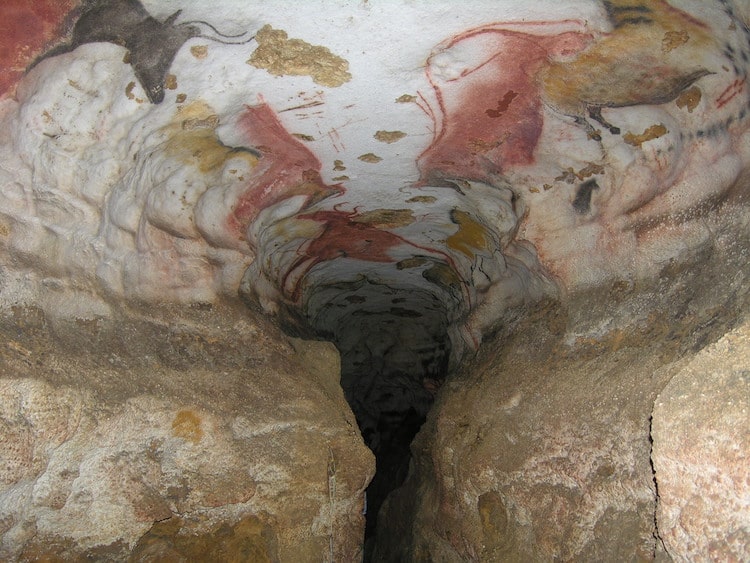
Painting of a bull (Photo: Wikimedia Commons, CC BY-SA 3.0 IGO International)
In 1940, a teenager accidentally stumbled upon a series of prehistoric paintings in southwestern France. Though eventually called the Lascaux cave, the site is actually a web of multiple caves, with art on the walls dating back to the Upper Paleolithic era (between 12,000 to 50,000 years ago). The excitement surrounding the discovery led to the cave’s opening in the mid-1950s. Thousands of people visited Lascaux every day, but no preservation methods were used and the paintings began deteriorating at an alarming rate. As a result, the caves have been closed to the public since 1963. Luckily, people are still able to experience the wonder of this discovery in other ways.
Twenty years after the cave was shuttered, Lascaux II opened in 1983, boasting a replica of the Great Hall of Bulls close to the real site. This was soon followed by Lascaux III, and Lascaux IV, the latter of which is considered a near-exact duplicate of the Lascaux cave. Not everyone is able to travel to the village of Montignac and visit the museum in person though. So, the National Archaeology Museum has made it possible to tour the incredible paintings from the comfort of your own home with a virtual online tour.
The digital experience allows for a more in-depth learning experience about the fascinating artworks, which people can enjoy at their leisure. Viewers can follow the 3D replica and get a better understanding of the map of the cave and where the different paintings are located, finding information about each work. You can also find further insight into how these pieces were made (including materials and methods).
Begin the Lascaux cave virtual tour via the National Archaeology Museum’s website.
The National Archaeology Museum has made it possible to visit the Lascaux cave paintings from the comfort of your home with an online virtual tour.

Interior of Lascaux Cave (Photo: Wikimedia Commons, CC BY-SA 3.0 IGO)
h/t: [Open Culture]
Related Articles:
Man Solves 20,000-Year-Old Cave Drawings Mystery That’s Been Stumping Archeologists
Oldest Neanderthal Engravings Have Been Preserved in a Cave for 57,000 Years
14th Century Cave Art From Lost Civilization Discovered on Uninhabited Caribbean Island
